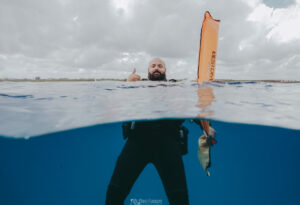The cenotes of Yucatán are among the most fascinating natural wonders of Mexico. These freshwater sinkholes, formed by the collapse of limestone rock, offer unique landscapes where jungle, history, and Mayan mythology come together.
In this guide, I’ll share all the essential information you need to explore the most beautiful cenotes of the peninsula: types, history, locations, practical tips, and my list of must-sees.
Get ready to dive into one of Mexico’s greatest natural and cultural treasures.
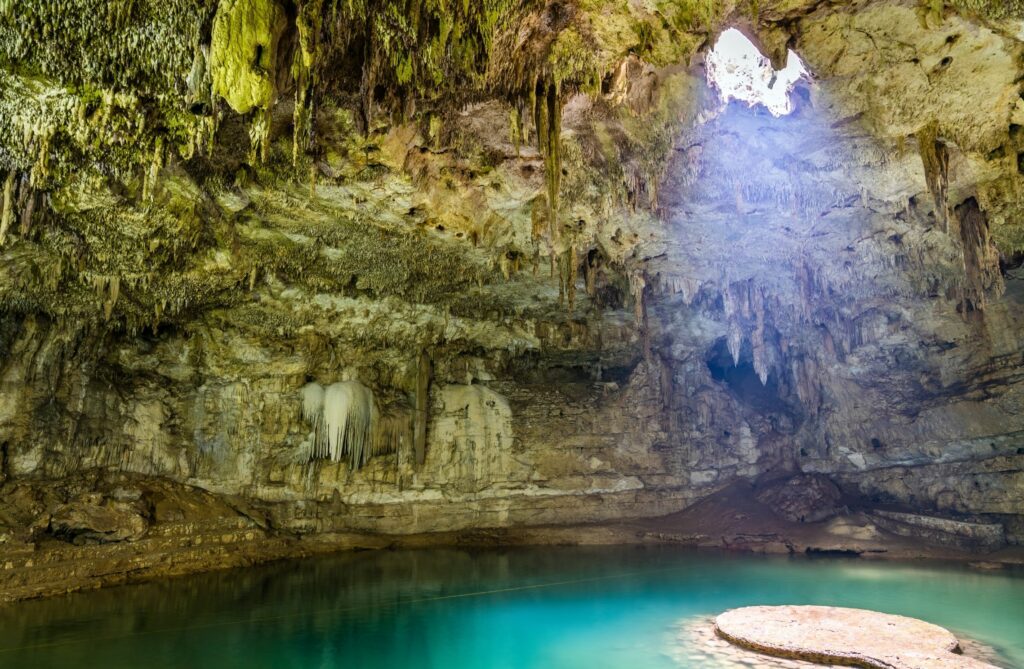
What is a cenote ?
The word “cenote” comes from the Mayan term dz’onot or ts’ono’ot, which means “sacred well.” These natural formations are typical of limestone regions, such as Mexico’s Yucatán Peninsula.
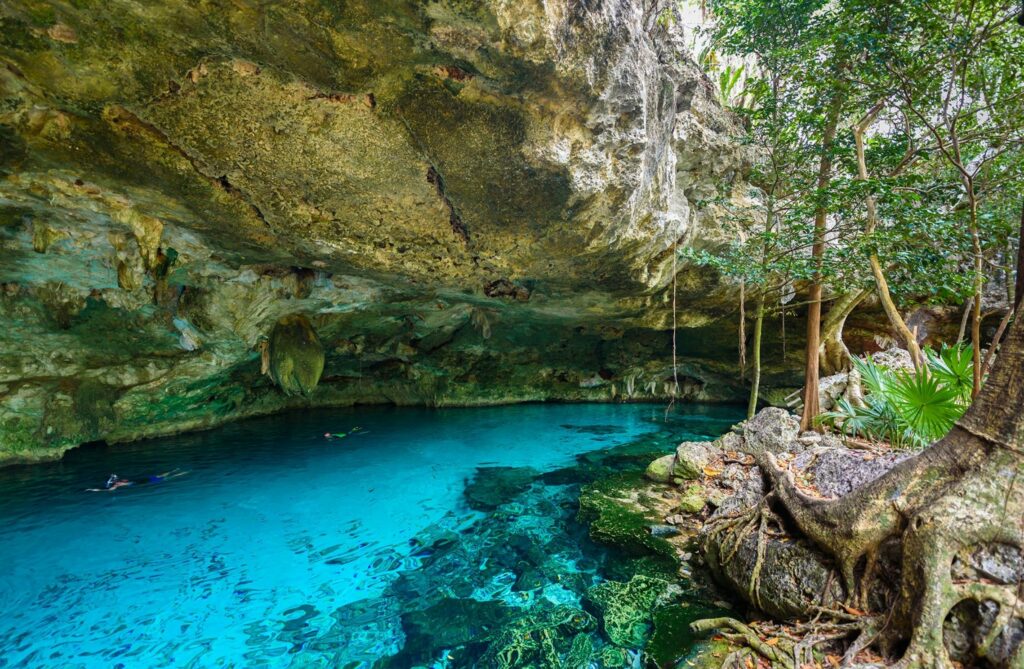
A cenote is formed when the roof of a limestone cavity collapses, revealing a well filled with fresh water. In some cases, these cavities are connected to the sea through underground networks, which explains the presence of an underlying layer of salt water.
I recommend this blog if you’d like to learn more about how cenotes are formed.
The 3 types of cenotes
In the Yucatán Peninsula, there are mainly 3 types of cenotes. Open cenotes, completely exposed to the sky, look like vast natural pools bathed in sunlight, such as Cenote Ik Kil or Cenote Azul.
Semi-open cenotes retain part of their rocky roof, creating a mix of shadows and beams of light, such as Cenote Maravilla.
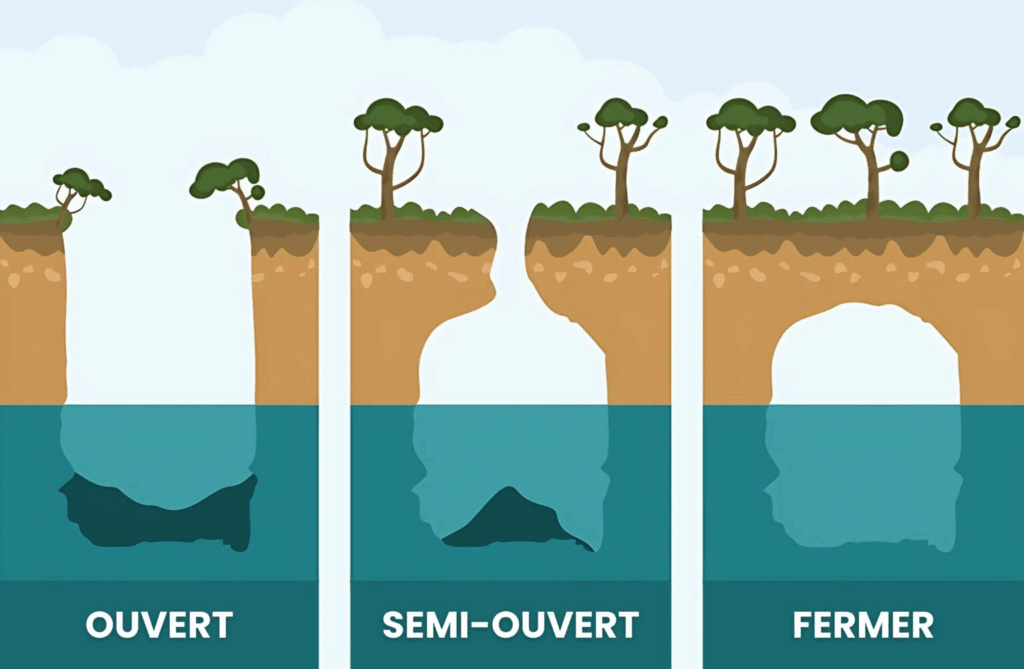
Finally, cave cenotes, accessible through a small opening, lead to underground pools shrouded in darkness, such as Cenote Taak Bi Ha.
What did cenotes mean to the Mayans ?
For the Mayans, cenotes were much more than just sources of water. As mentioned above, the word comes from dz’onot or ts’ono’ot, meaning “sacred well.” These natural cavities were seen as portals to the underworld, Xibalbá, the realm of the gods and ancestors.

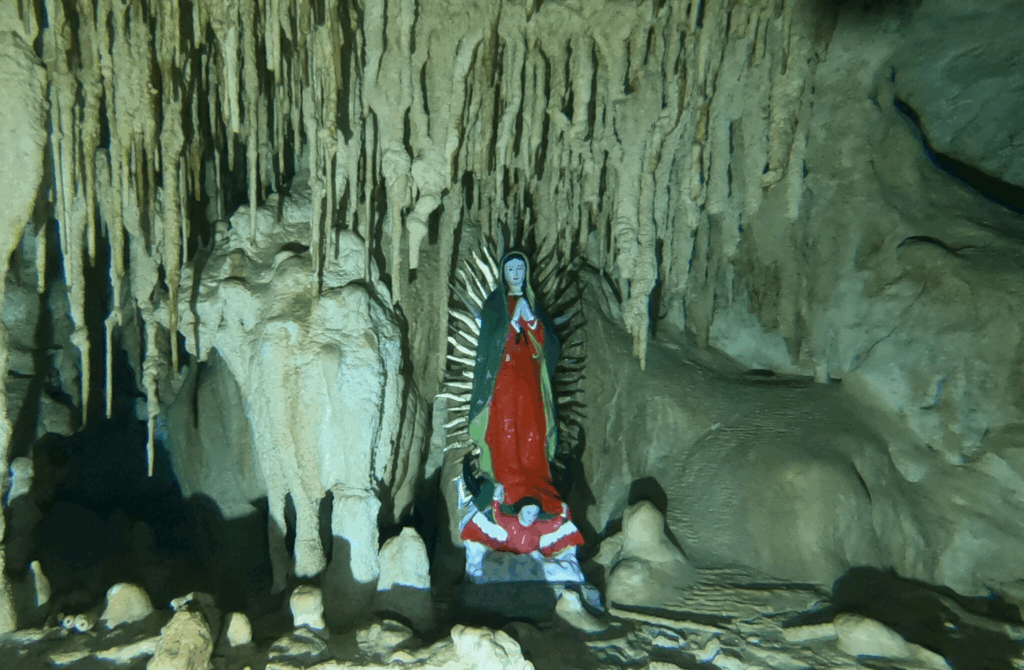
Rituals, offerings, and sometimes sacrifices were carried out there to honor Chaac, the rain god, who was essential to agriculture. Archaeological excavations have uncovered pottery and human remains, bearing witness to their spiritual role.
Beyond religion, cenotes also shaped daily life, as the Mayans often built their cities nearby to ensure access to fresh water.
Where are the cenotes located in Mexico ?
Cenotes in Mexico are found mainly in the Yucatán Peninsula, which holds an immense concentration of these natural freshwater sinkholes. Around 10,000 have been identified in this region, though only about a quarter are known and explored.
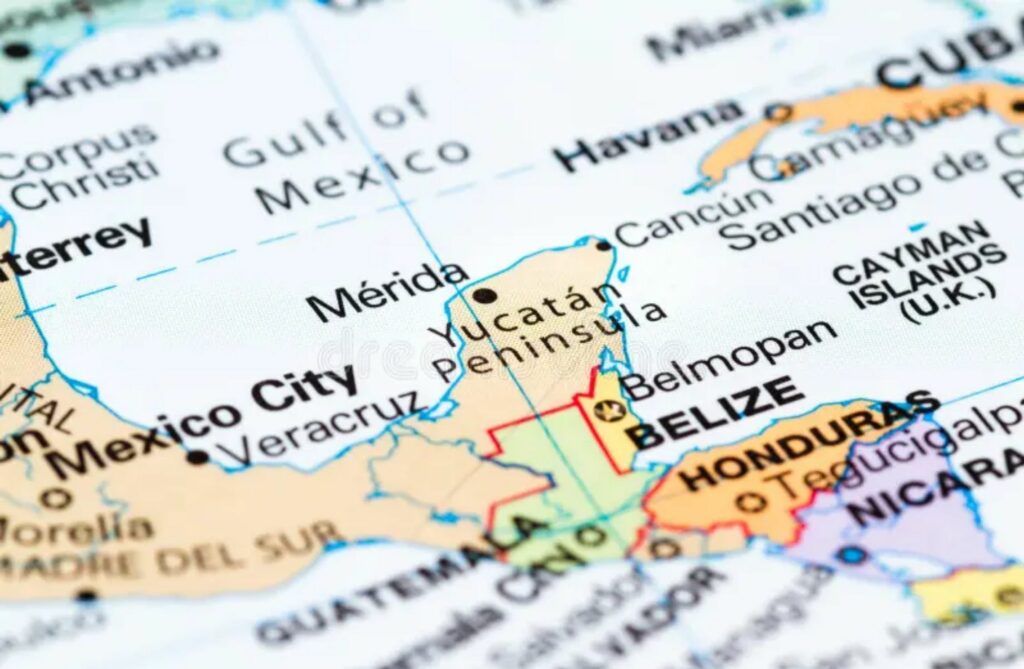
These unique geological formations are characteristic of the Yucatán, a region in southeastern Mexico.
The main and most visited cenotes are found in areas such as Tulum, Playa del Carmen, Valladolid, Mérida, as well as around archaeological sites like Chichen Itza.
My Top 16 Cenotes in Yucatán, Mexico for 2025
If there’s one truly unique experience to have in Yucatán, it’s exploring the cenotes. After swimming, diving, and even jumping into these natural wonders,
here’s my top 16 cenotes you absolutely must discover in 2025:
1. Cenote Dos Ojos
In my opinion, Cenote Dos Ojos is without a doubt one of the most famous and spectacular sites in the Yucatán Peninsula, Mexico!
Highly appreciated by cenote divers and nature lovers, it captivates as much with its beauty as with its vastness.

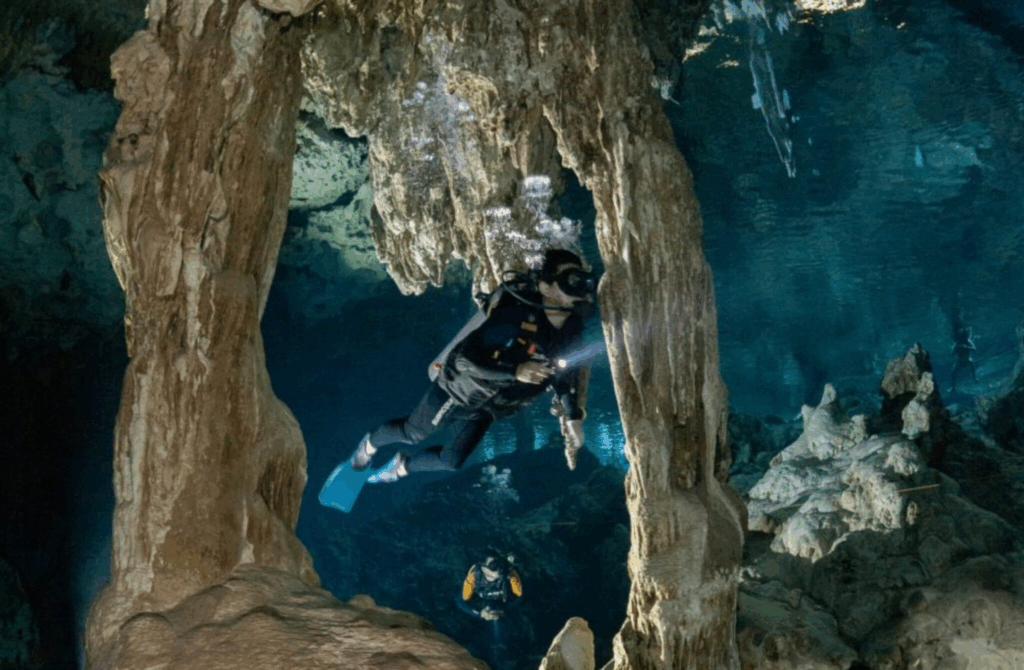
Its name, “Two Eyes,” comes from the two round openings on the surface which, side by side, resemble the gaze of a pair of eyes watching from within the jungle.
The site also features an impressive network of caves and flooded passages, forming one of the most remarkable underwater systems in the region.
The entrance fee to the Dos Ojos park (which includes Dos Ojos, Taak Bi Ha, Nicte-Ha, and Jaguar) is 400 MXN. The site is open daily from 9 a.m. to 5 p.m. and is located…
As for diving in Cenote Dos Ojos, you need to have your Open Water certification, and the price is around 3,700 MXN, depending on the dive centers.
2. Cenote The Pit
Also part of the gigantic Sac Actun system, recognized as the largest underwater cave network in the world with over 364 km already explored,
Cenote The Pit is one of the deepest in the Yucatán Peninsula.
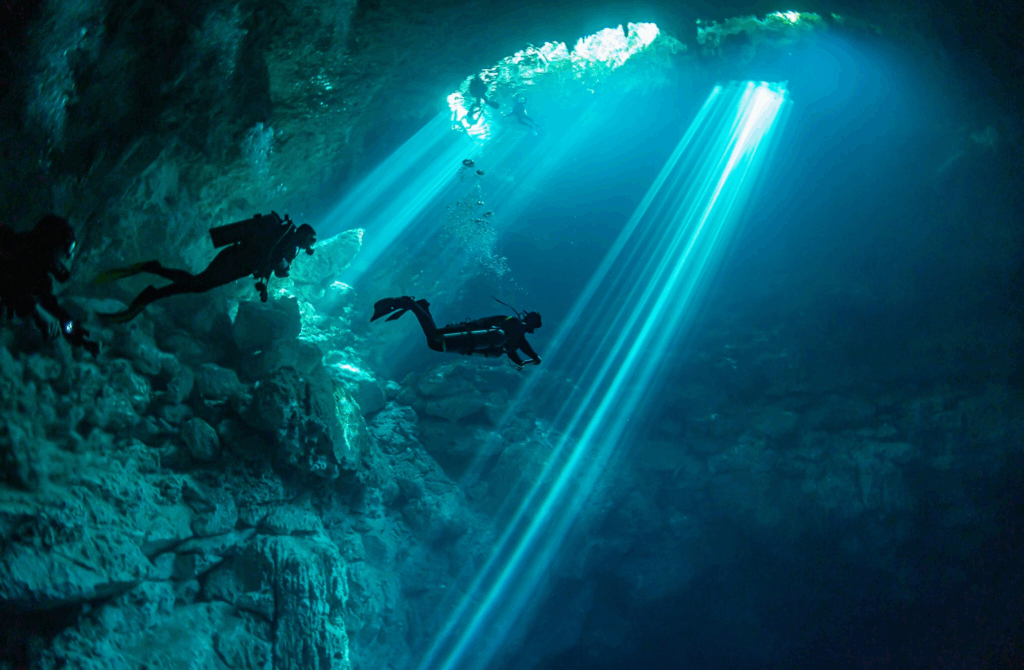
Its name, “The Pit,” perfectly describes its morphology: a discreet opening on the surface that leads into a breathtaking vertical cavern, fascinating Advanced Open Water (or higher) certified divers from around the world in search of a truly unique experience.
Note that Cenote The Pit is reserved exclusively for diving, snorkeling is not allowed.
As for diving in Cenote The Pit, you need to have your Advanced Open Water certification, and the price is around 4,000 MXN, depending on the dive centers.
3. Cenote Azul
Cenote Azul is one of the most popular in Mexico thanks to its proximity to Playa del Carmen, just about a 20min drive away.
A true oasis in the heart of the jungle, it enchants visitors with its crystal clear blue waters and lush surroundings, giving it a unique charm.
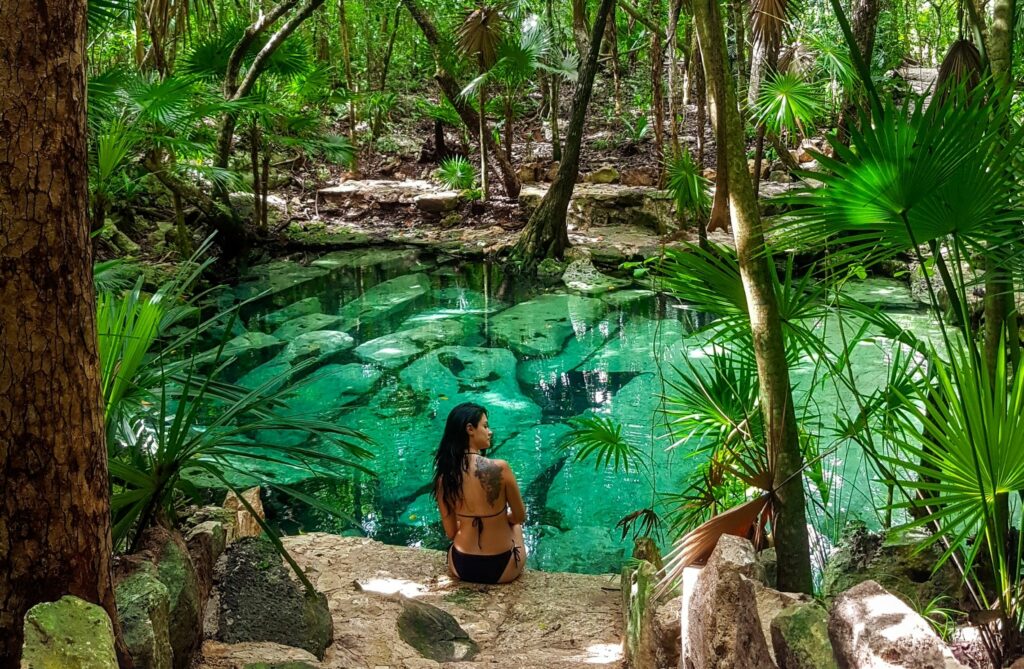
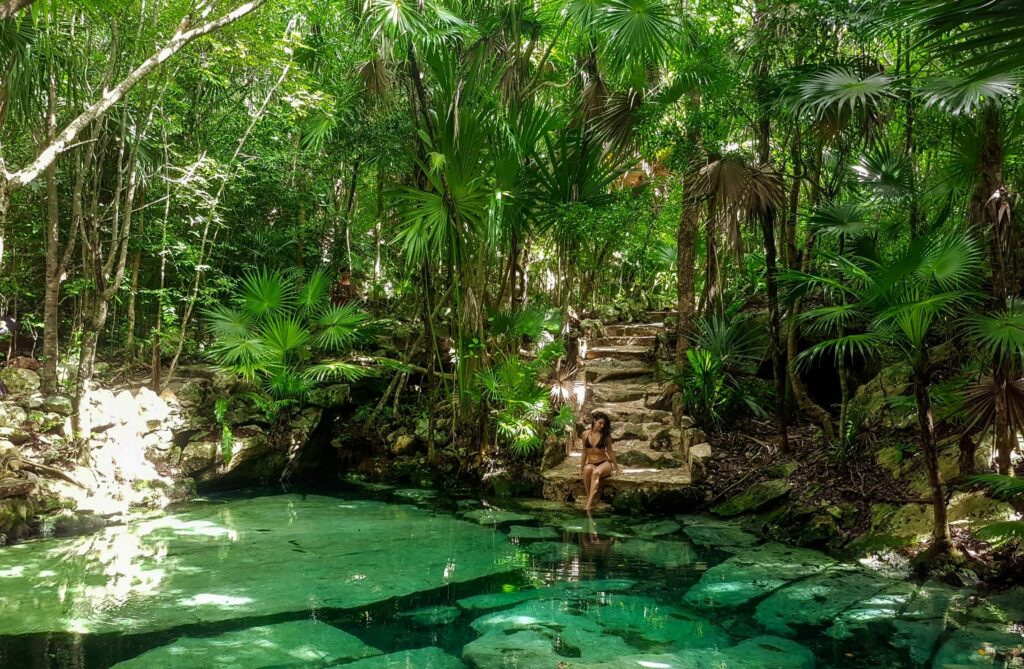
This spot offers several pools, including a main one surrounded by small natural basins hidden in the vegetation, perfect for relaxing. The more adventurous can jump from a small cliff about 3m high, which serves as a natural diving platform.
The trip takes about 25min from Playa and a little over half an hour from Tulum. You can get there by car or by shared transport. In that case, the vehicle stops on the highway right next to the entrance, which saves you from a long walk to reach the site.
The entrance fee is 180 MXN (120 MXN for children from 4 to 7 years old). The site is open daily from 8:30 am. to 5 pm.
4. Cenote Chac Mool (Kukulkán)
Cenote Kukulkán, located near Tulum, is part of the Chac Mool system. Easy to access, it captivates with its exceptionally clear waters, where visibility can exceed 30 meters.
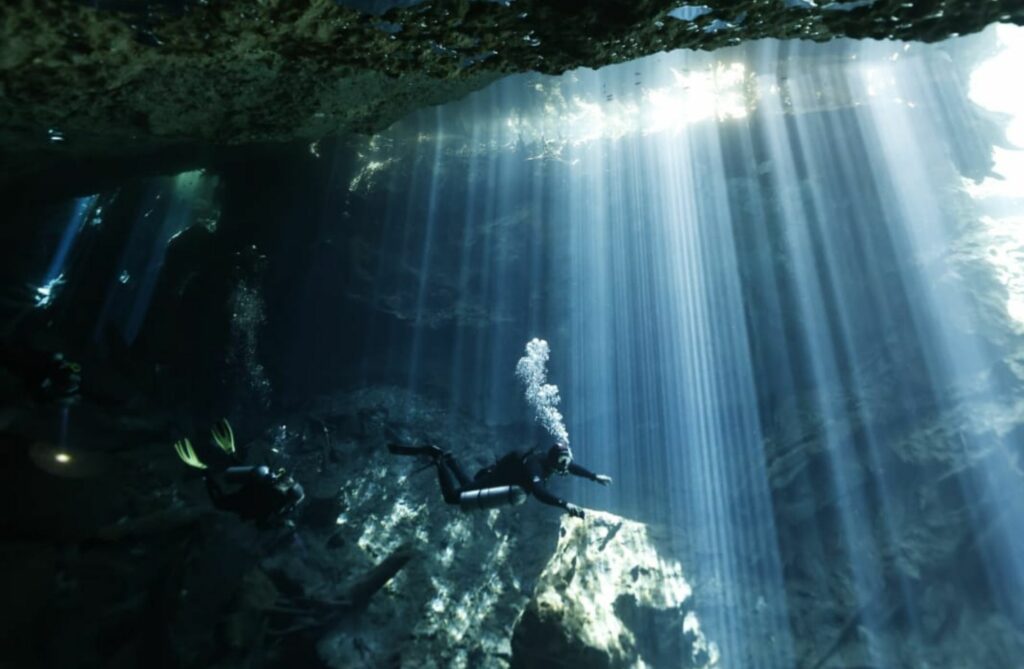
You can go snorkeling at Cenote Chac Mool, although this site is mostly renowned for scuba diving. It is famous for its spectacular light effects, when the sun’s rays transform the water into almost unreal luminous curtains. On top of that, there is the fascinating halocline phenomenon.
As for diving in Cenote Chac Mool, you need to have your Open Water certification, and the price is around 3,600 MXN, depending on the dive centers.
5. Cenote Angelita
At first glance, Cenote Angelita looks discreet, with a circular opening hidden in the heart of the jungle. Yet this place radiates a unique atmosphere that leaves a lasting impression on everyone who discovers it.
Angelita remains off the most crowded tourist circuits, which gives it a special charm.
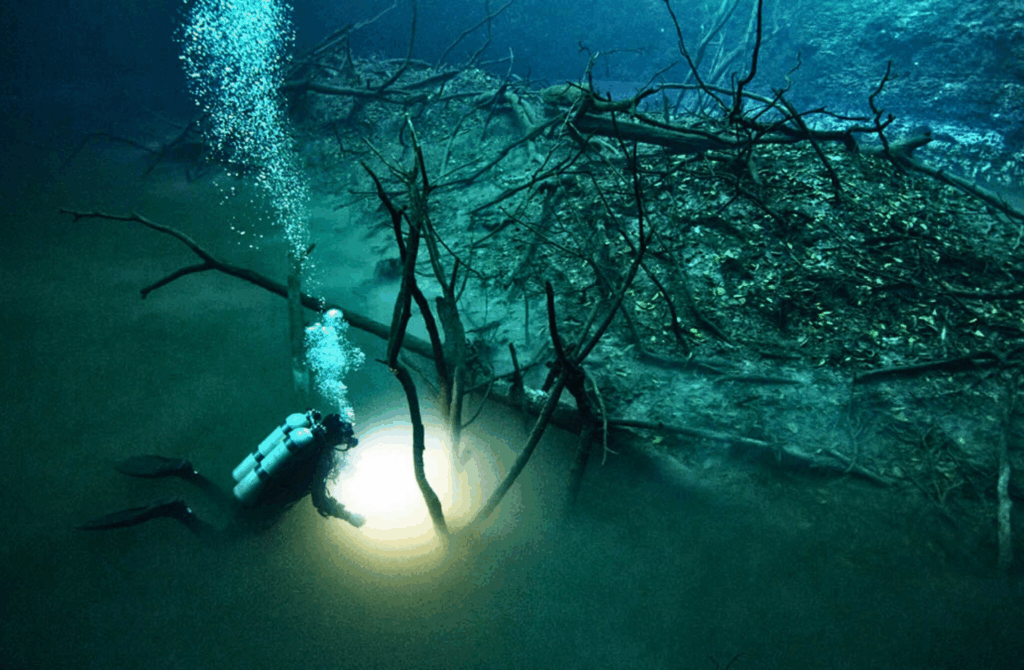
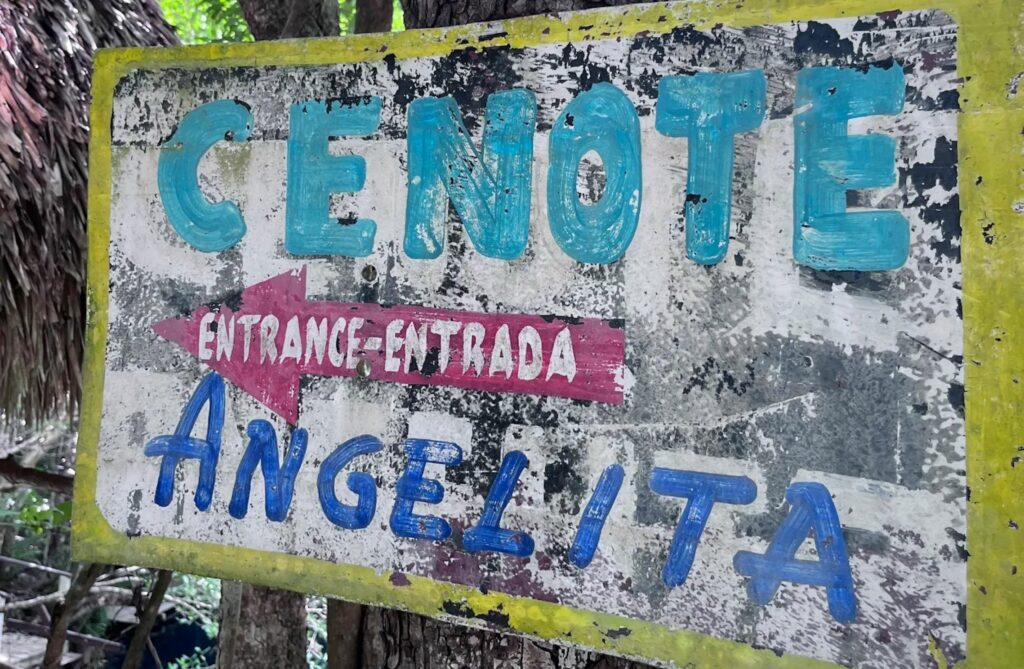
Although snorkeling is allowed at Cenote Angelita, this site is especially popular and particularly suited for certified and experienced divers due to its great depth and the strange hydrogen sulfide cloud located about 30m below the surface.
As for diving in Cenote Angelita, you need to have your Advanced Open Water certification, and the price is around 4,000 MXN, depending on the dive centers.
6. Cenote Ik-Kil
In the center of the Yucatán Peninsula lies Cenote Ik Kil, a vast natural sinkhole nearly 60m in diameter.
Its steep walls are covered in greenery, with long tree roots hanging down to the water’s surface, creating a spectacular setting.
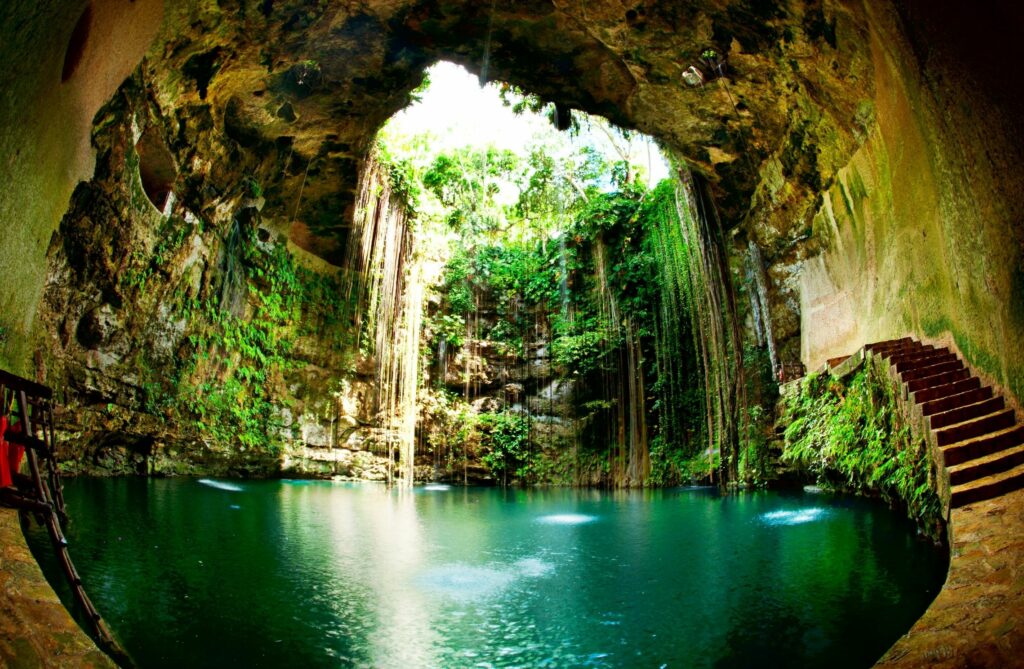
Considered one of the most famous cenotes in Mexico, it is located only 2km from the ancient city of Chichen Itza. Excavations have uncovered offerings, jewelry, and even human bones, reminding us of the spiritual importance of this place for the Mayans.
The trip to Cenote Ik Kil takes about 2h from Playa del Carmen. You can get there by car or by shared transport. In that case, all colectivos traveling between Valladolid and Chichen Itza stop at Cenote Ik Kil.
The entrance fee is 220 MXN, or 480 MXN with the budget package, which includes a life jacket and a locker. The site is open daily from 9 am. to 5 pm.
7. Cenote Carwash
Cenote Carwash, officially called Aktun Ha, gets its original nickname from a local anecdote. In the past, taxi drivers used to stop there to wash their cars in its clear waters.
Today, this site has become much more than just a pool. It is truly a haven for snorkeling enthusiasts, divers, or simply those who love to explore.
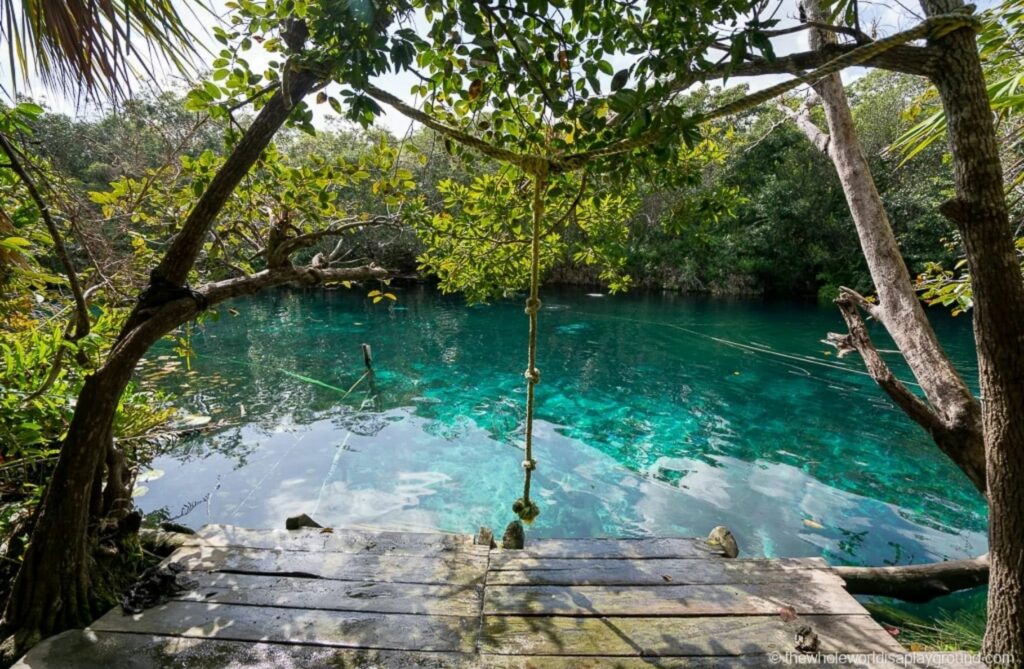
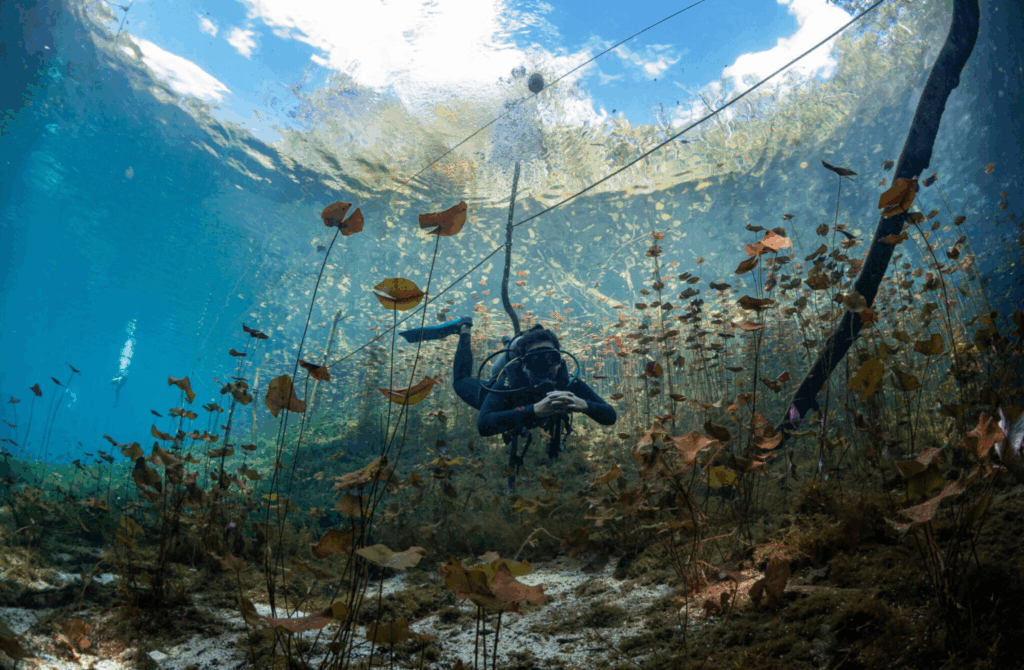
Here you can enjoy remarkable visibility and a vibrant aquatic life full of colors. Its modest yet functional facilities allow visitors to spend a pleasant time in nature, with a small rope to swing into the water.
The entrance fee to the Dos Ojos park (located right next to Cenote Zacil-Ha and the Gran Cenote) is 300 MXN. The site is open daily from 9 am. to 5 pm. and is located…
As for diving in Cenote Carwash, you need to have your Open Water certification, and the price is around 4,000 MXN, depending on the dive centers.
8. Cenote Taak Bi Ha
Cenote Taak Bi Ha is one of the most beloved in the region for its stunning stalactites and its preserved atmosphere. The water is so clear that you can see the rocky formations deep below, giving the impression of floating in a natural aquarium.
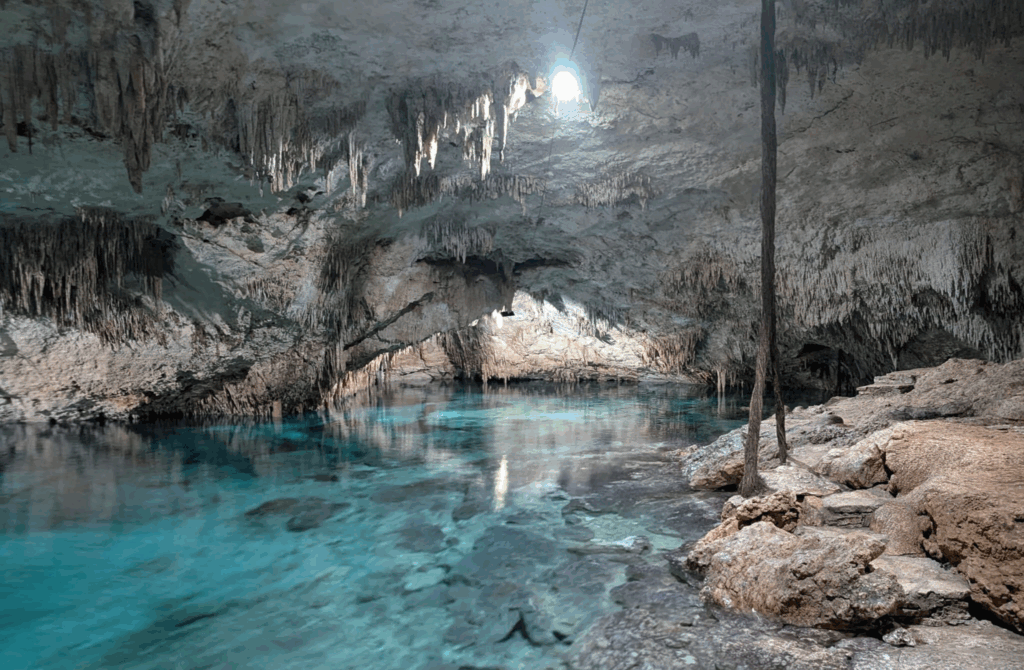
To reach it, you need to go down a staircase that leads directly inside a cave. The atmosphere is calm and intimate, ideal for those looking for a more authentic experience.
The trip to Cenote Taak Bi Ha takes about 3min from Tulum. You can get there by car or by taxi. Without a vehicle, it is possible to walk from the entrance of the Dos Ojos park (about 40min) or to find transport on site, as the road is very busy.
The entrance fee for Cenote Taak Bi Ha is not paid at the Dos Ojos park entrance but directly at the cenote. The price is 400 MXN. The site is open daily from 9 am. to 5 pm.
9. Cenote Dreamgate
Still off the beaten tourist paths, Cenote Dreamgate is nevertheless one of Yucatán’s hidden gems. Here, the experience goes far beyond a simple visit, as you literally enter the depths of the Earth.
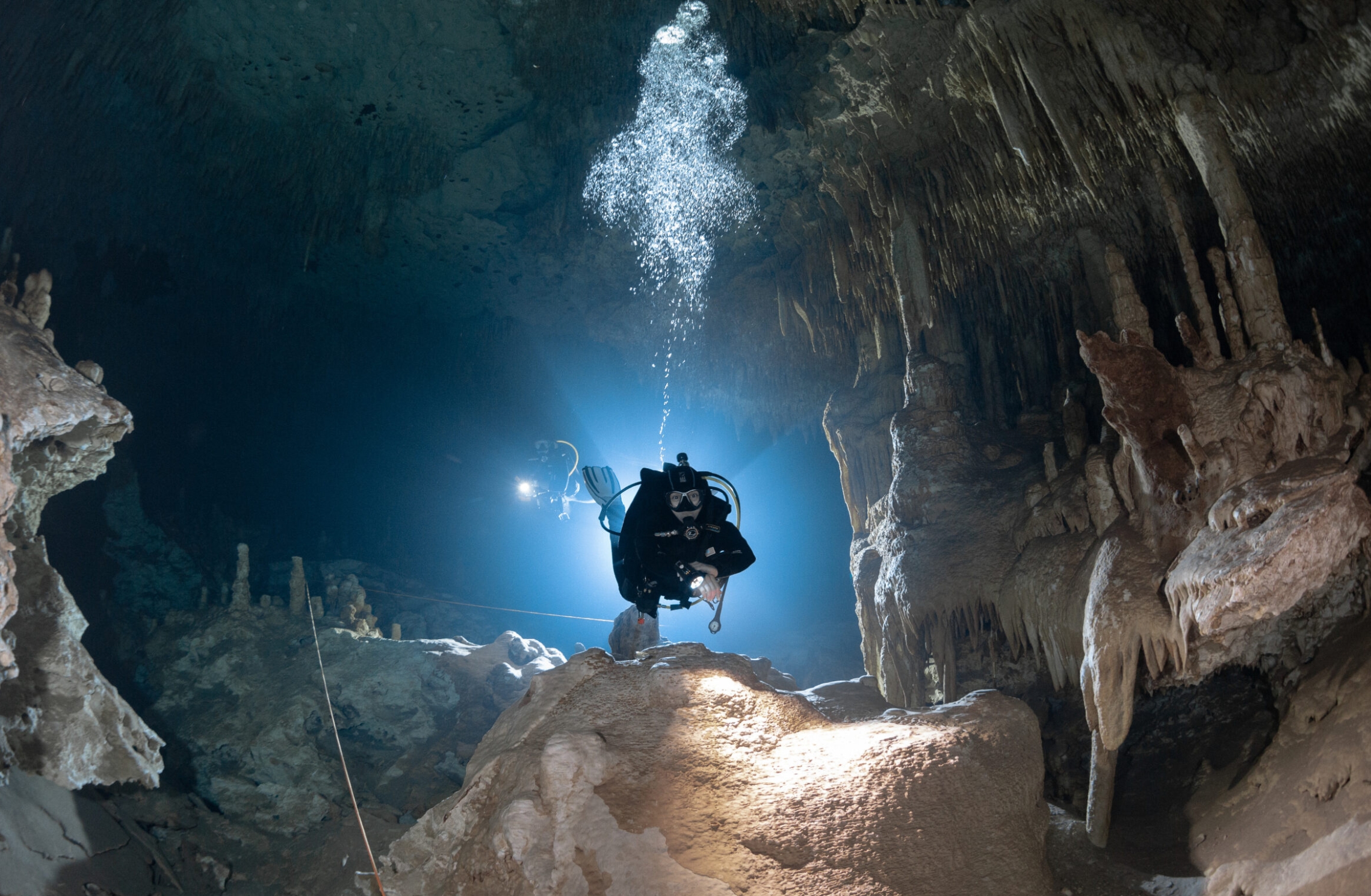
The place is so impressive that it was even featured in the famous BBC documentary series Planet Earth. This exposure helped make Dreamgate known worldwide.
As for diving in Cenote Dreamgate, you need to have your Advanced Open Water certification, and the price is around 3,700 MXN, depending on the dive centers.
10. Cenote Zapote
ChatGPT a dit :
Cenote Zapote is one of the natural treasures of the Ruta de los Cenotes, west of Puerto Morelos. Nestled in the heart of the jungle, it is part of the Cenote Zapote EcoPark, an ecological area that includes several cenotes and offers various outdoor activities.
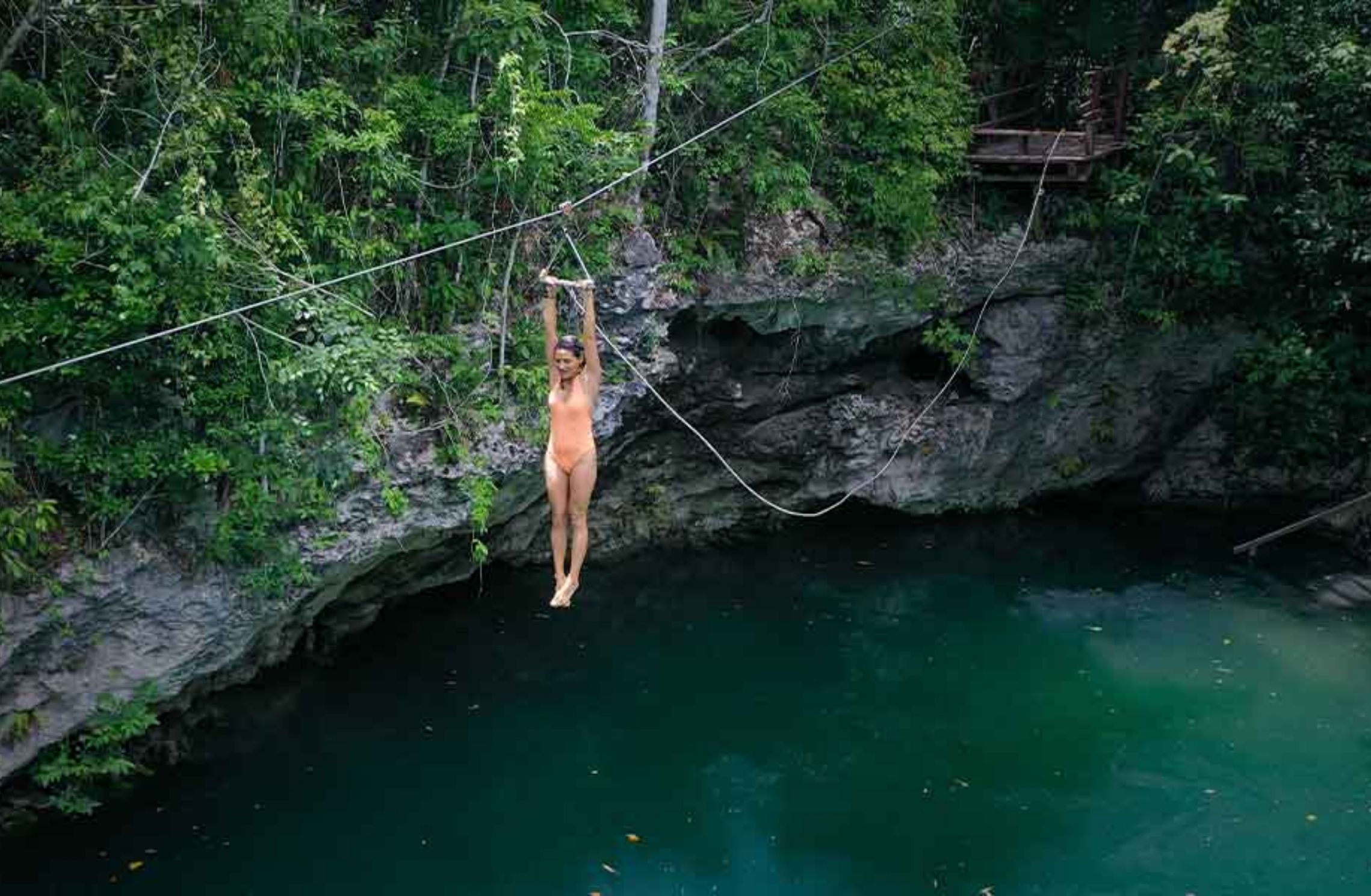
Beyond the beauty of its crystal clear water, the park invites visitors to enjoy a full day of adventure with zip lines, jungle trails, and swimming areas suitable for the whole family.
Diving in this cenote, however, is reserved for experienced divers. It offers a unique experience thanks to its impressive limestone formations, nicknamed Hell Bells, natural sculptures suspended in the depths.
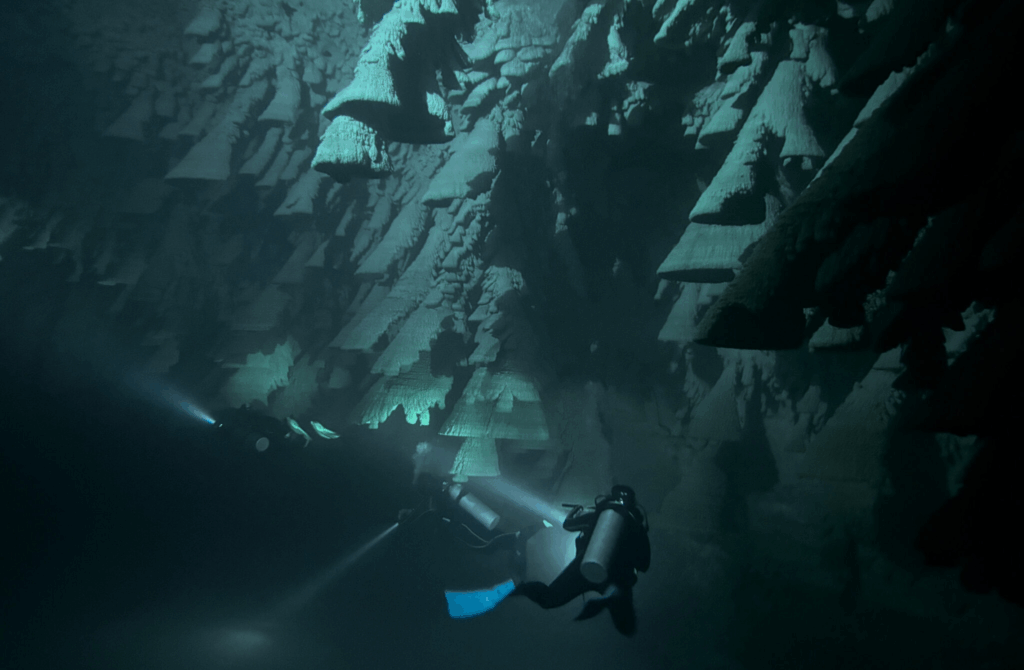
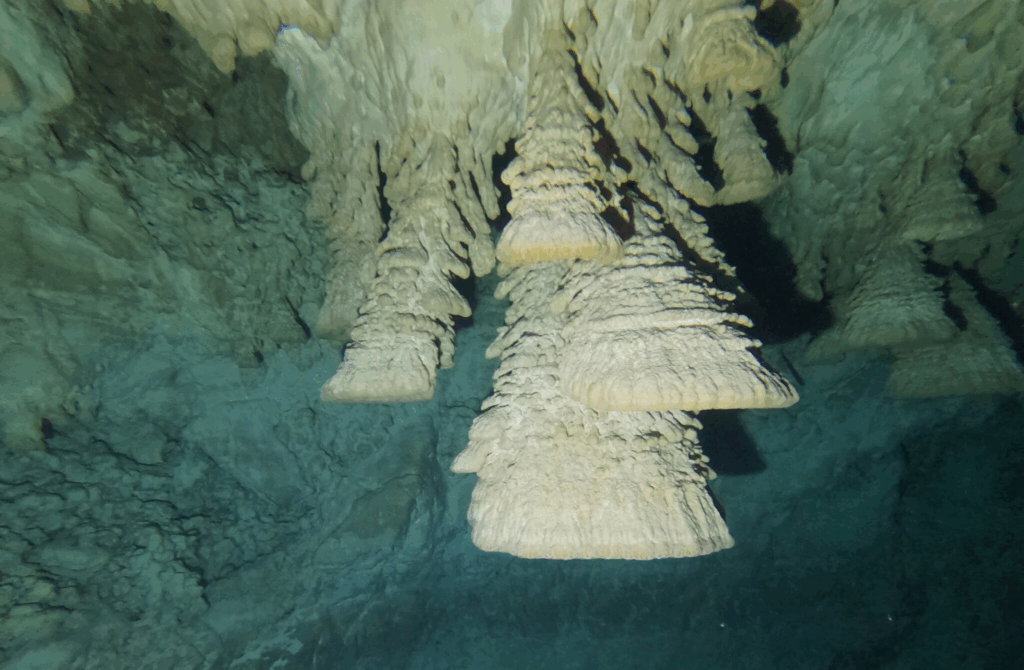
Few sites combine geological mystery and exceptional diving as much as Cenote Zapote, making it a must-visit destination for thrill seekers and nature lovers.
The entrance fee to the Cenote Zapote EcoPark (which includes Cenote Zapote, Cenote Las Palmas, Cenote El Abuelo Che Che, and an underground cenote, a cave over 10,000 years old) is 645 MXN. The site is open daily from 9 am to 6 pm and is located…
As for diving in Cenote Zapote, you need to have your Advanced Open Water certification, and the price is around 4,000 MXN, depending on the dive centers.
11. Cenote Oxman
Cenote Oxman is without a doubt one of the most iconic in Valladolid. Nestled in the heart of an old colonial hacienda, it captivates with its impressive natural sinkhole, surrounded by steep walls covered in vines and roots that plunge directly into the turquoise water.
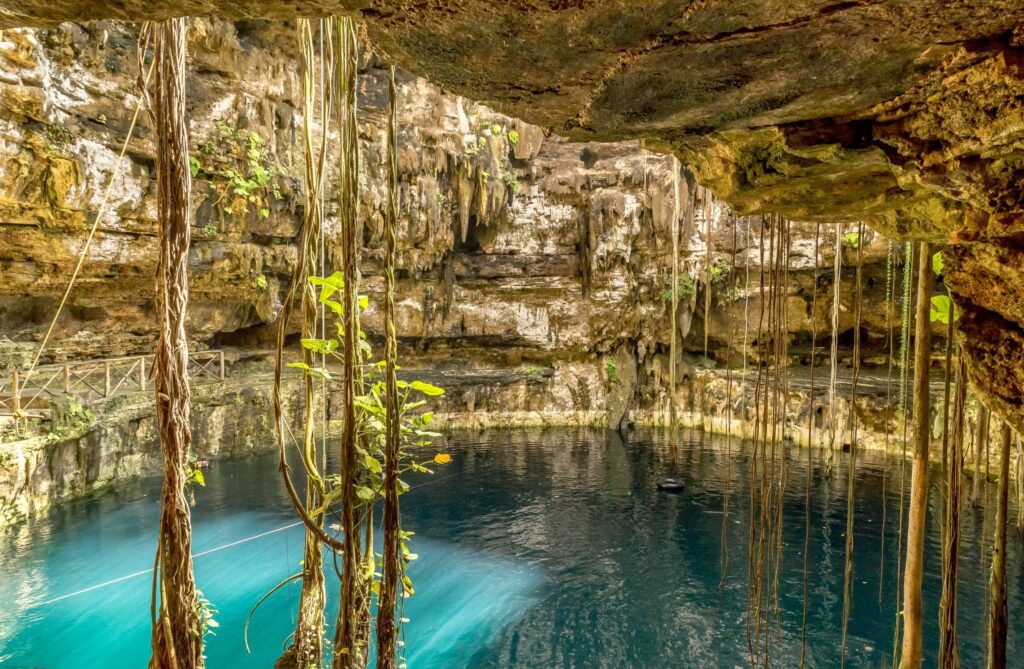
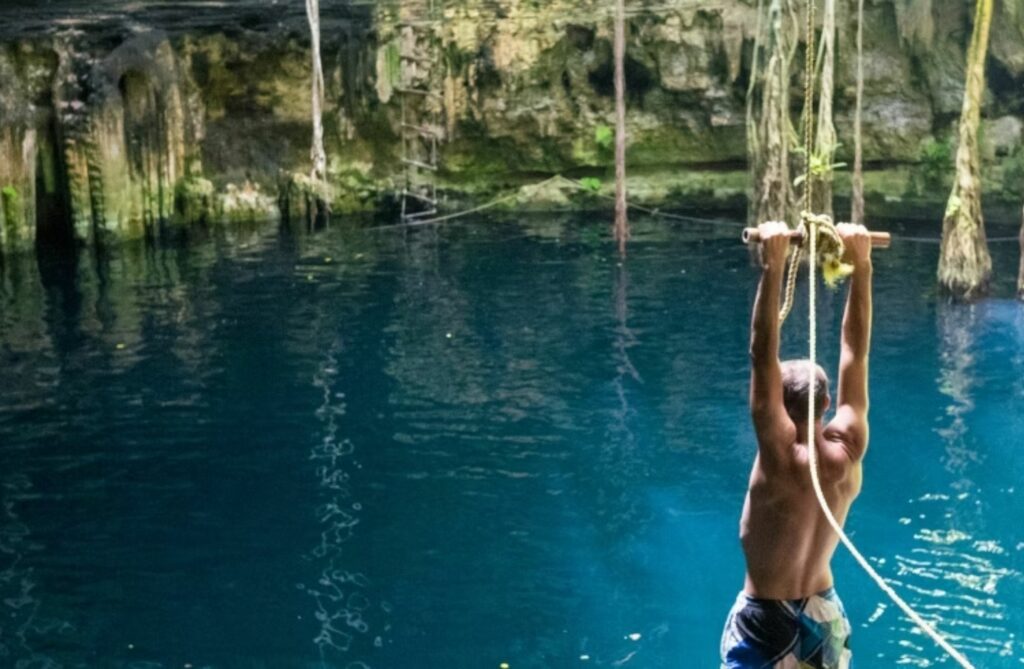
This spectacular setting, worthy of a postcard, makes it a must-see for anyone wishing to discover the magic of Yucatán’s cenotes in an authentic and welcoming atmosphere.
The trip to Cenote Oxman takes about 10 to 15min by car from Valladolid. From Playa del Carmen, it is about an hour and a half by car or taxi. You can get there by car, taxi, or shared transport from Playa del Carmen.
Cenote Oxman is located on the property of Hacienda San Lorenzo Oxman, where parking is available upon arrival. From the parking lot, a short walk leads to the cenote entrance.
The entrance fee to Cenote Oxman is 150 MXN for the basic option or 350 MXN with access to the buffet. The site is open daily from 7 am. to 5 pm.
12. Cenote Maravilla
Cenote Maravilla is one of the most impressive along the Ruta de los Cenotes, near Puerto Morelos, in the heart of the Yucatán Peninsula. Its limestone formations are spectacular, including stalactites shaped like bells.

A rare phenomenon can also be observed here: a thick layer of hydrogen sulfide that gives the place a mysterious and almost unreal atmosphere.
This site impresses with its raw beauty. Personally, I would not go snorkeling there, but it remains a natural wonder to discover for its unique diving atmosphere.
As for diving in Cenote Maravilla, you need to have your Advanced Open Water certification, and the price is around 4,000 MXN, depending on the dive centers.
13. Gran Cenote
The Gran Cenote is one of the best known and most beloved in Yucatán. Its beauty lies in the clarity of its turquoise water and in the harmonious combination of open areas bathed in light and darker galleries, somewhat like Cenote Dos Ojos.
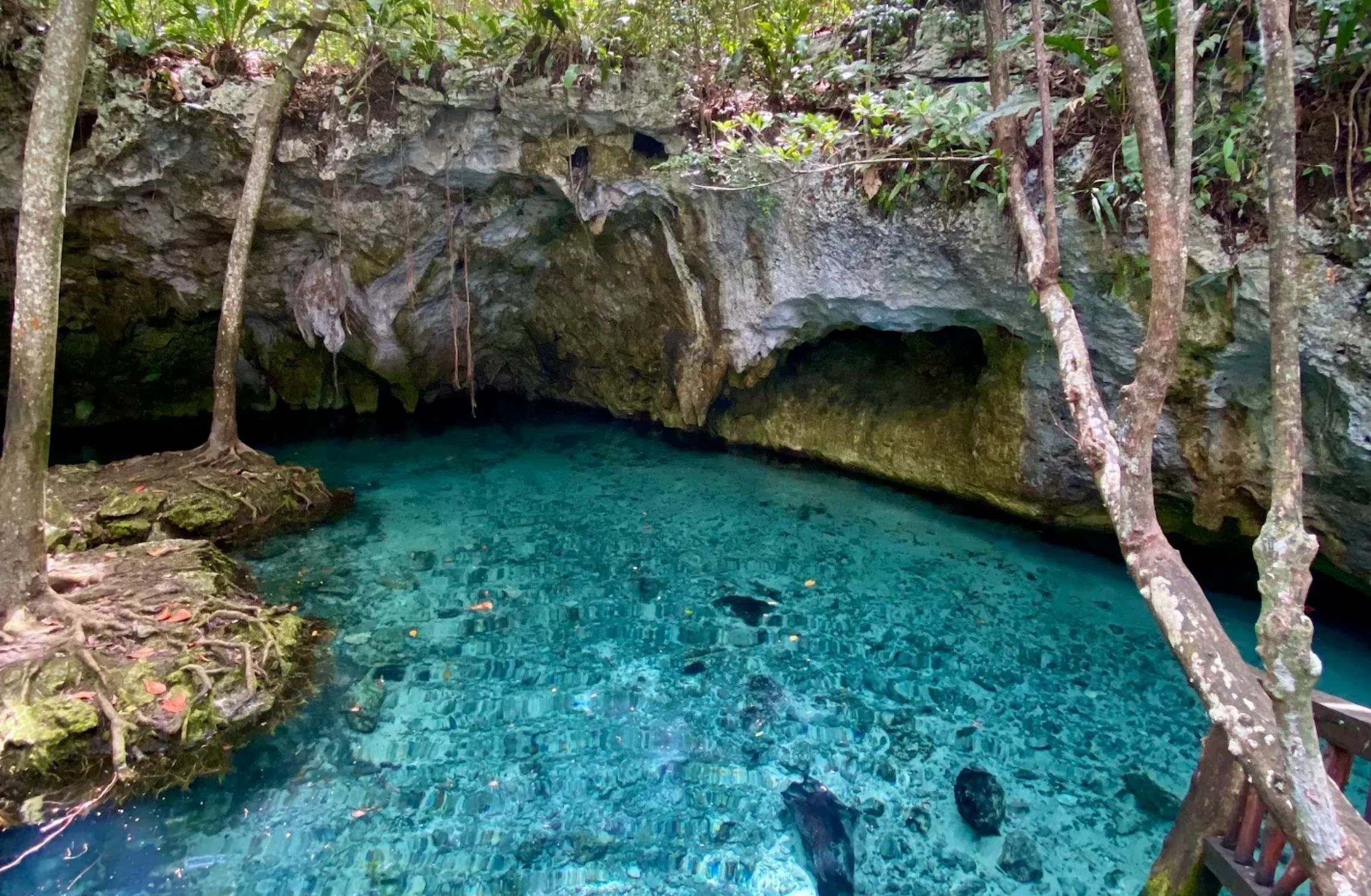
Surrounded by lush vegetation, it offers a spectacular natural setting that appeals both to those seeking relaxation and to those looking for exploration.
The trip from Playa del Carmen to the Gran Cenote takes about 50 to 55 minutes by car to cover roughly 66 km. You can get there by car, taxi, colectivo, or an organized shuttle. Traveling by bus (ADO) is also an option.
This cenote is located only 3km from the Tulum ruins, easily accessible by taxi or by bike from downtown Tulum.
The entrance fee for the Gran Cenote is 300 MXN. It is open daily from 8 am. to 4:45 pm., with the last entry allowed at 4:15 pm.
14. Cenote Suytan
Cenote Suytún is a natural wonder of Yucatán, renowned for the clarity of its waters and its absolutely stunning and “Instagrammable” setting.
It became famous thanks to its impressive circular platform that extends into the middle of the water. When the sun’s rays pass through the ceiling opening, they illuminate the scene and create an almost unreal atmosphere.

This cenote is also known for its almost mystical atmosphere. The rocky walls surrounding the water, the stalactites hanging from the ceiling, and the peaceful silence of the place create a setting that is both impressive and soothing.
Cenote Suytún is located about 134km from Playa del Carmen, which is roughly a 1 hour and 40 minute drive. Driving remains the fastest and most economical way to reach it from Playa del Carmen.
The entrance fee for Cenote Suytún is 300 MXN. The site is open daily from 9 am. to 5 pm. Cenote Suytún is located about 8km from Valladolid.
15. Cenote Jardín del Edén
Cenote Jardín del Edén, also known as Cenote Ponderosa.
This large natural pool, surrounded by rocks and lush vegetation, offers shaded areas that are perfect for relaxing.
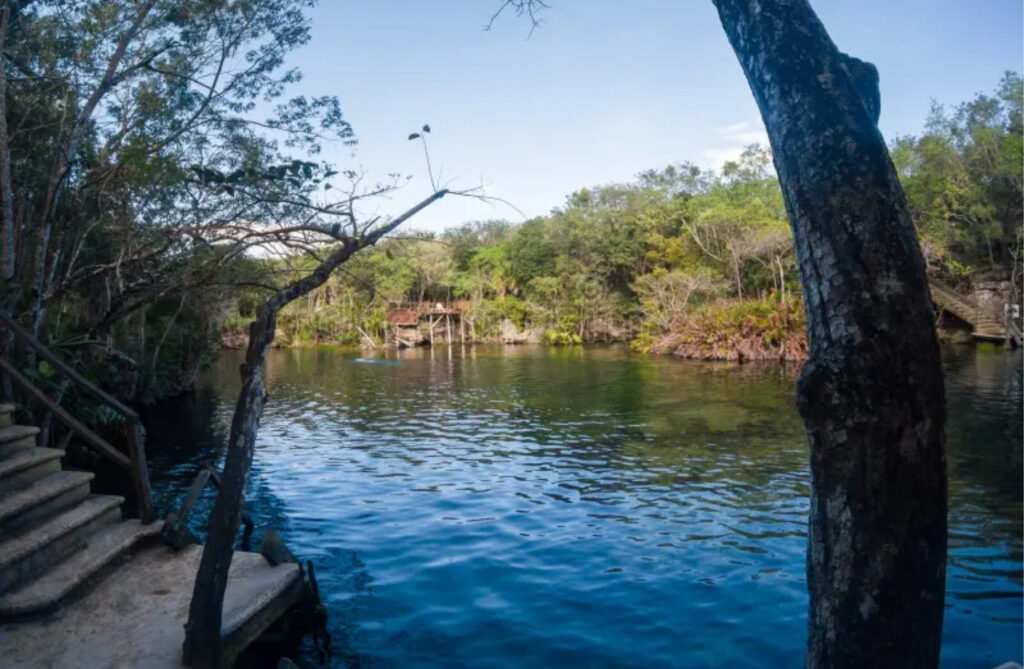
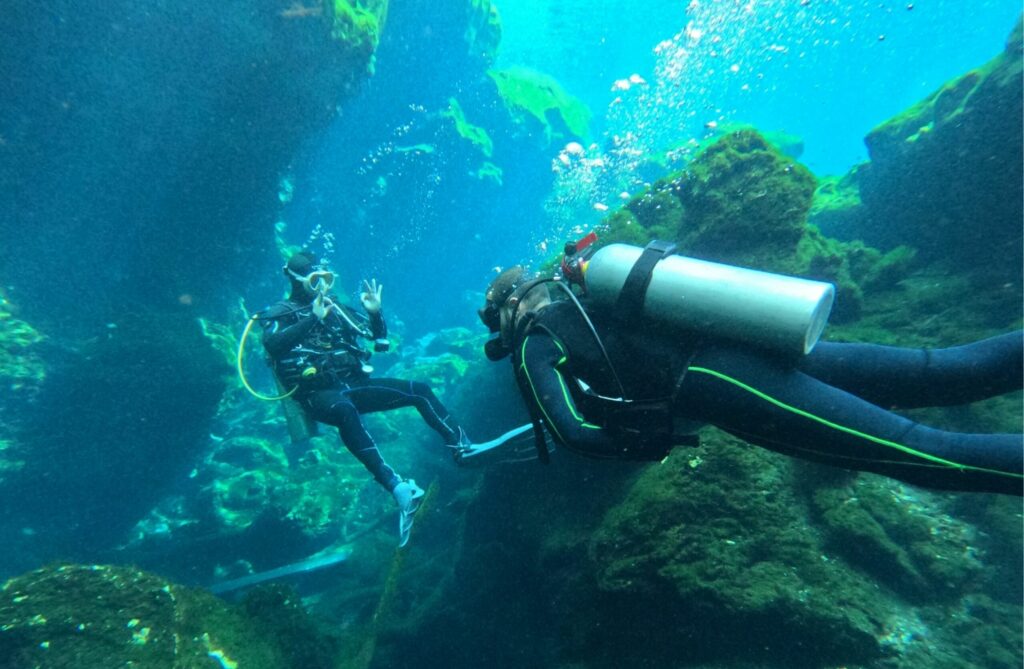
The more adventurous can dive into the water from designated platforms. This open cenote reveals a rich aquatic life, with colorful fish and underwater plants.
The entrance fee to Cenote Jardín del Edén is 100 MXN. It is open daily from 8 am. to 5 pm. and is located…
As for diving in Cenote Jardín del Edén, you do not need any certifications. You can do a discovery dive there for a price of around 3,200 MXN.
16. Casa Cenote
Between Playa del Carmen and Tulum lies Casa Cenote, also known as Cenote Manatí, a unique spot in the Riviera Maya.
Here, the roots of the mangrove intertwine with the crystal clear waters, creating a setting that is both mysterious and soothing.
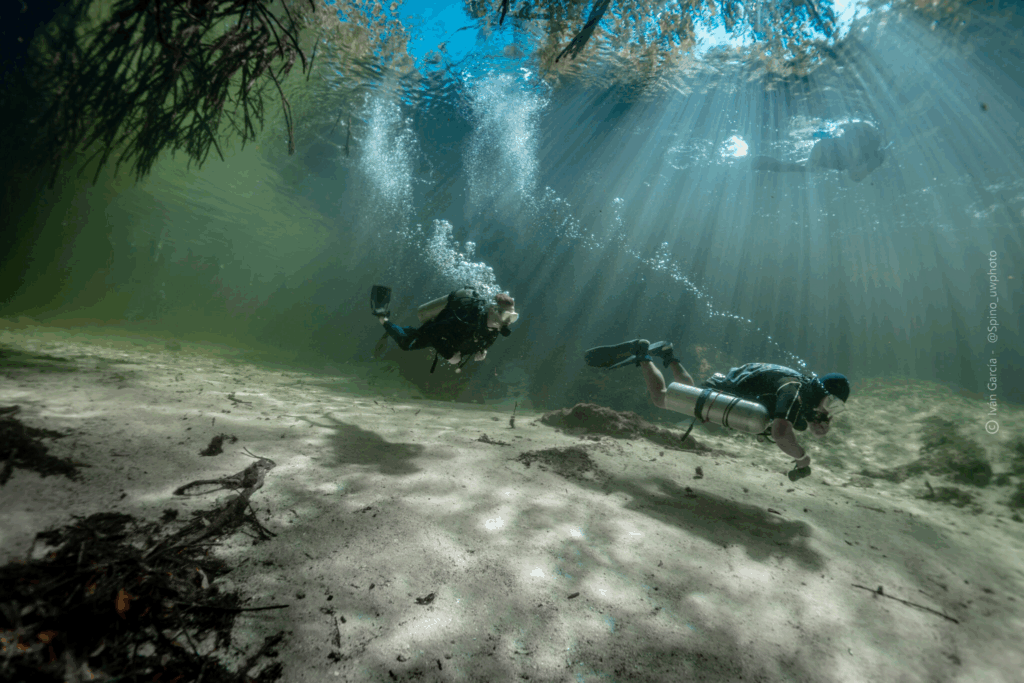
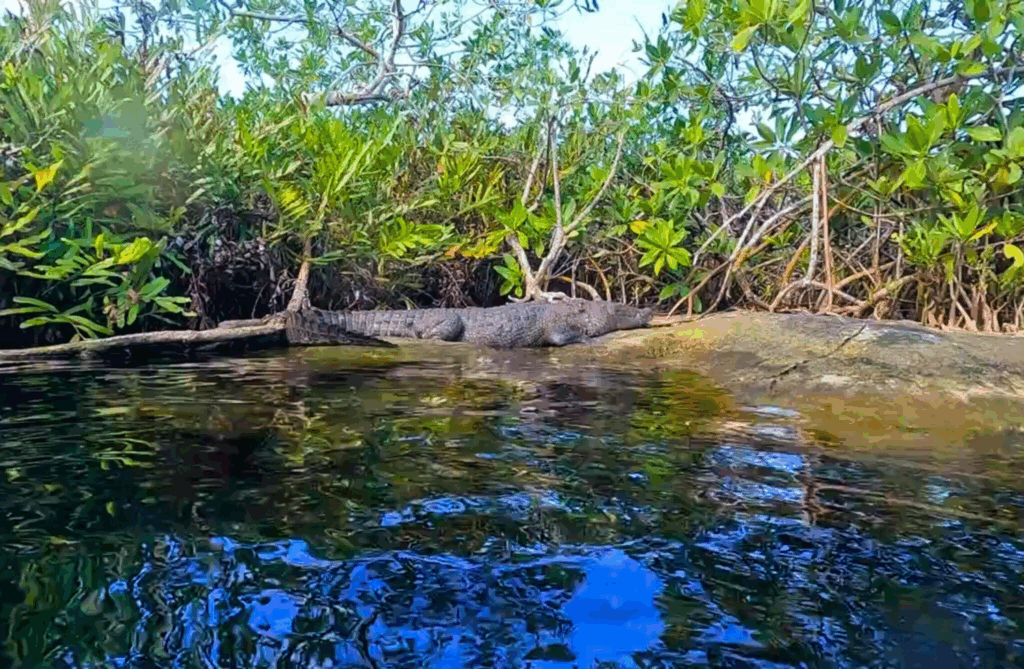
This large open cenote attracts both curious visitors looking for a first diving experience and travelers in search of wild nature. You may even get the chance to go kayaking or spot Pancho, the guardian crocodile of Casa Cenote.
The entrance fee to Casa Cenote is about 150 MXN. The site is open daily from 9 am. to 5 pm. and is located…
As for diving at Casa Cenote, you do not need any certifications. You can do a discovery dive there for a price of around 3,400 MXN.
Summary
Exploring the cenotes of Yucatán means diving into a natural and cultural heritage unlike anywhere else in the world. From simple open pools to mysterious caves, each one reveals a fascinating universe of crystal clear waters, spectacular geological formations, and the spiritual legacy of the Mayans.
Whether you want to swim, snorkel, or dive, there is a cenote for every kind of adventure. These natural wonders, accessible at reasonable prices, will no doubt remain one of the most memorable experiences of your trip to Mexico.
